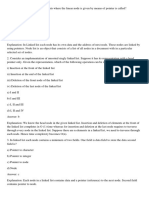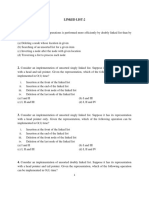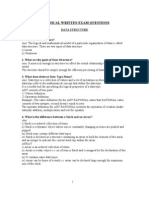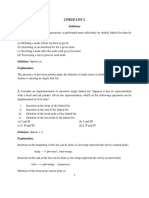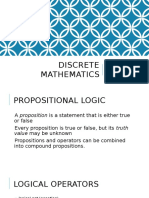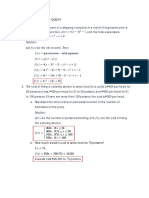0% found this document useful (0 votes)
148 views23 pagesChapter 3-Linked List
The document discusses different types of linked lists and operations that can be performed on linked lists. It begins with an introduction to linked lists and then covers topics like dynamic implementation of linked lists, types of linked lists including singly linked lists, doubly linked lists and circular linked lists. It also discusses operations that can be performed on linked lists like insertion, deletion, traversal with their time complexities. It provides examples and questions to test the understanding of linked lists.
Uploaded by
Bhavesh SonawaneCopyright
© © All Rights Reserved
We take content rights seriously. If you suspect this is your content, claim it here.
Available Formats
Download as PDF, TXT or read online on Scribd
0% found this document useful (0 votes)
148 views23 pagesChapter 3-Linked List
The document discusses different types of linked lists and operations that can be performed on linked lists. It begins with an introduction to linked lists and then covers topics like dynamic implementation of linked lists, types of linked lists including singly linked lists, doubly linked lists and circular linked lists. It also discusses operations that can be performed on linked lists like insertion, deletion, traversal with their time complexities. It provides examples and questions to test the understanding of linked lists.
Uploaded by
Bhavesh SonawaneCopyright
© © All Rights Reserved
We take content rights seriously. If you suspect this is your content, claim it here.
Available Formats
Download as PDF, TXT or read online on Scribd
/ 23
















